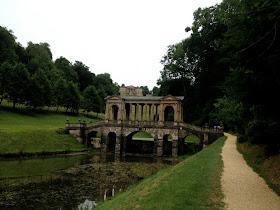The idea of putting together a handling table last Wednesday was supposed to bring objects out of the stores and to give a closer look at Roman jewellery, and the purposes they served during these times.
Roman jewellery was quite simply designed. Wealthier people preferred jewellery made of gold but the most common jewellery in this period was made of cheaper metals such as bronze, iron or animal bone. Precious stones, enamel and glass usually decorated them.
The objects I chose were mostly copper alloyed jewellery such as brooches, bracelets, some rings and interesting beads, which were widely used as attachments to jewellery.
Among them I decided to use some replicas of Roman brooches found in Britain since they could represent better the real colours, the techniques and the shapes of the brooches used during the Roman period and can be handled.
Brooches are one of the most common discoveries at Roman sites in Britain. The Latin word for a brooch is fibula and this is a common term used in archaeology. Unlike most modern brooches, fibulae were not only decorative; they originally served a practical function: to fasten clothing, such as cloaks. They come in many different types, shapes and decoration. Roman brooches were mostly made in animal, trumpet, and pennanular shapes.
Rings were worn by men and women from all levels of the society. For men they were regarded as a privilege and awarded as a military distinction. Apart from ornamental rings some rings were engraved and used as seals to sign important documents while some others had keys attached for important boxes such as strongboxes.
Roman gemstones were used in all sorts of jewellery and some of them were thought to have medical properties. Among the most common semi-precious stones during Roman times were jet and carnelian. The Romans also wore other jet jewellery such as hair pins, and pendants. Carnelian beads were commonly attached by wires to jewellery while they were also widely used for making engraved gems for signet or seal rings.
Even though the exhibits did not have the shine of precious metals and stones people seemed to enjoy this time travel to Roman times through jewellery, and showed special interest in hearing additional information concerning ancient metallurgy and the functional use of jewellery.
Antri, Leicester University MA placement










